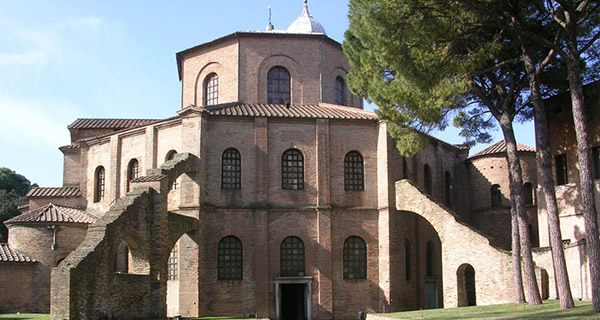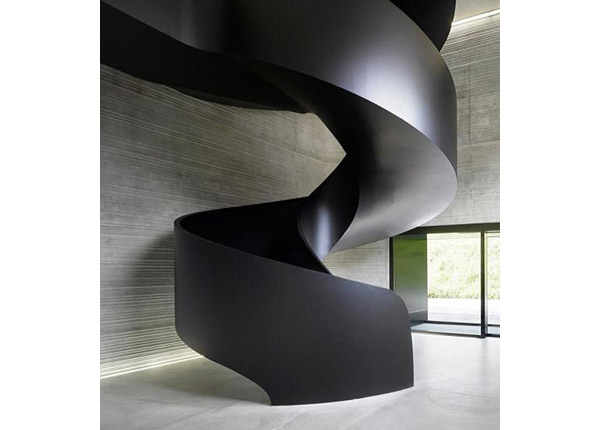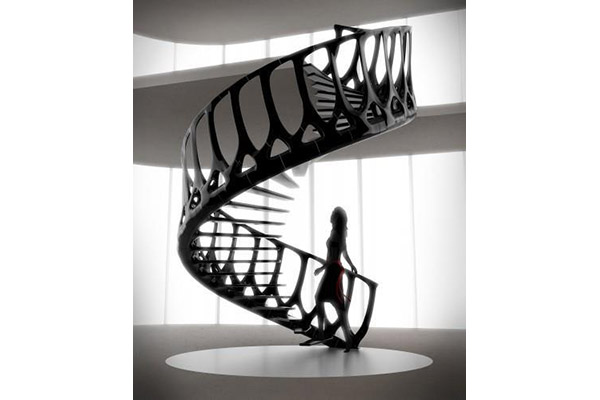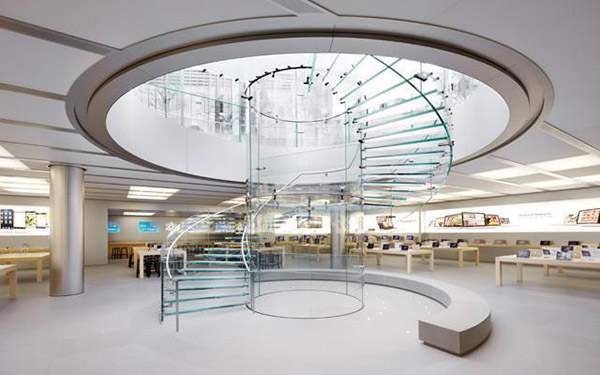An essay about Imagination and Construction
The origins of stairs
Stairs are one of the oldest constructions in architectural history. It is believed the first stairs dated from 6000 BC: in order to overcome difficulties imposed by the terrain, men fitted together wood trunks, so that they could move fast, easily and safely. They were not designed, calculated or even planned. They were just an intuitive way to solve a problem.
With the years, and along with mankind’s evolution, the stair was used for religious devotions; a metaphorical way to reach the Sky connecting the Earth/Men with the Gods. Stairs were not only functional but a symbol of ascension, a rising path towards the light.
In medieval times, stairs were also used for military purposes. Around castles, stone spiral stairs were built in order to place the attacking soldier at a disadvantage. With no handrail or walls surrounding the stairs, the objective was to make the opponent fall of the castle.
Trajan’s Column was the forerunner of this elegant curved way to reach the top. Due to its complex helical structure, it was only developed later on during Classical Antiquity (the period running approximately from 8th Century BC to 600 AD); the Romans saw it as a perfect space-saving solution, not only used in Triumphal Columns but also in Temples, Thermae, Tombs and Basilicas.
External stairs and stair towers
It is during the Late Antiquity (approximately 2nd to 8th Century AD) that the staircases are brought to the outside; Stair Towers were constructed adjacent to the main building as we can see in Basilica di San Vitale. Between stone walls, the spiral stairs, also made of stone, were very heavy and thick. Usually tight and winding around a central pole, they were also very steep.

The Basilica di San Vitale, Ravenna, Italy famous for its stair towers
Developing safer and more efficient staircases
In order to solve this lack of comfort and safety, Nicolas-François Blondel introduced the ergonomic relationship between the tread and riser dimensions. In his book Cours d’Architecture [1675-1683] he brings up the formula: 2x riser + tread = step length.
With this, most building codes limit the use of spiral stairs to small areas or secondary usage, unless the central column is very large. For a more uniform tread width helical stairs are used. These stairs don’t have a central pole but handrails on both sides.
The double helix staircase is a good example of how to be even more efficient in space-saving. With two independent helical stairs in the same vertical space, these type of staircases allows the double amount of people to ascent or descend.
Modern designs
Over the years, staircases have adapted and evolved, they have become technically advanced, changing shape and materials. With the Industrial Revolution, the use of steel has made possible to expand our imagination into daring curves and fantastic sweeps that are important features in contemporary design.
Human Beings tend to push their limits, to find new solutions defying gravity, forms and shapes. Some find the simple lines, the minimalistic and subtle forms elegant. They tend to hide any element they see as an intrusion to reach that clean visual effect.

Office Basel-Landschaft, Liestal, Switzerland, by Architects EM2N (Public Photo Record)
Others find inspiration in organic forms. Andrew McConnell, for example, created a Vertebrae Staircase based on a whale backbone. The vertebrae are mated using steel fittings and locked together with steel pins. These interlocking vertebrae create a rigid and self-supporting structure: an exploration in shaping structure, where the steps, balustrade and handrail become a unified steel spine.

Vertebrae staircase, Andrew McConnell (Public Photo Record)
The Apple Store’s spiral stair in Shanghai is an example of the advances in technology. Who would ever imagine a material like glass used as a resistant staircase? A see-through material that immediately conjures up to us to the fragility of its use. The cylinder pole, made of curved glass slabs is connected through a special laminating process that clamps the steel joints to the rest of the pane, ensuring stability as people walk across it. A simple clean metal handrail along with the glass balustrade brings the visitor to the next level reassuring them of safety of using this staircase. Public

Apple’s glass staircase, Shangai (Photo Record)
From subtle and heavy creations to dramatic light ones, staircases are, without any doubt, a constructive form of expression that attracts attention and inspires. Safety and comfort need to be the pre-requisites in any stair construction however the will to stand out from the crowd and have WOW feedback is the goal with these daring designs. Staircases can be seen as a microcosm of the building, a way to attract media attention, exposing the designer/architect’s work to the world.